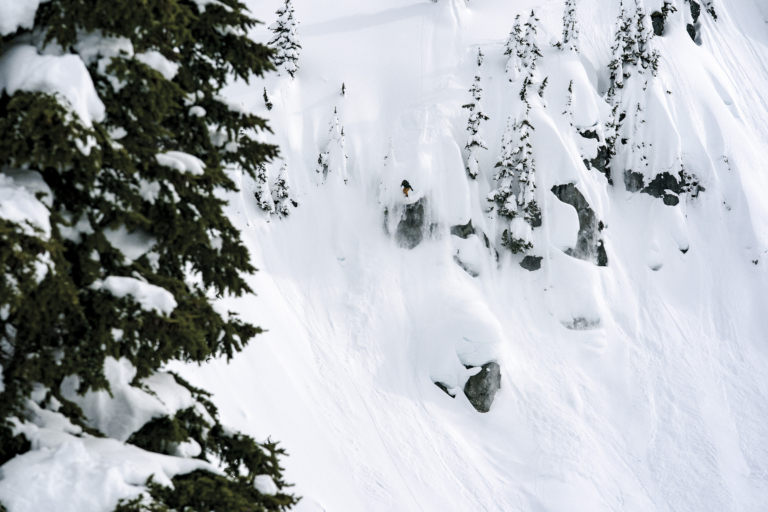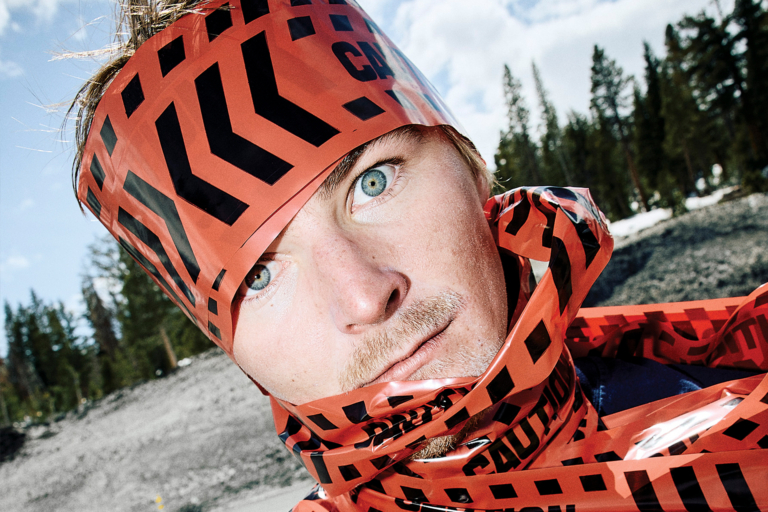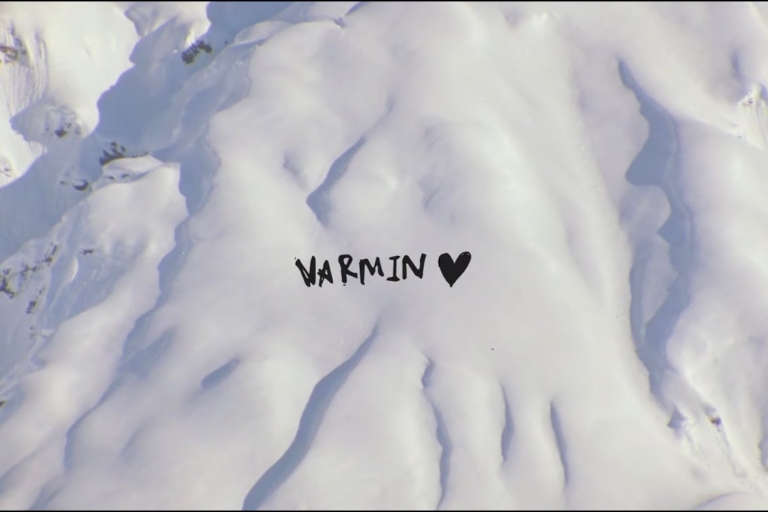Now two years in on the modified halfpipe Home Break, is the Steamboat, Colorado, rider breaking down the walls of a new era of transition riding?

Mike Basher: Once the snowboarding community saw what was possible in breaking down some of the walls on halfpipe riding with last year’s Home Break, how was the vibe coming into this year’s event?
Taylor Gold: Well, we went from having a handful of riders that pulled up for a day or two last year to having 20 riders that stayed pretty much the entire time. This year, Steamboat stepped up to a 22-foot pipe, so everything was just on a bigger scale. It was kind of a cool evolution. We knew the concept worked, so [we] wanted to build on it.

What do you feel a modified pipe brings to the creativity of riding transition?
I think it adds another cool layer. Like, I think halfpipe has a lot more room by itself for creativity than you see in contest snowboarding. Nobody really films in the halfpipe too much anymore, so I feel like you kind of miss out a little bit on that creativity there. But then with the modified pipe, you kinda have that element built in already, so it gives you that room to explore those more creative tricks.
For me, it almost rides more like a backcountry line—something you really have to adapt to as your run comes together. With a standard pipe, you’re always hitting the exact same wall, no matter where you are on the wall.
Do you think that the future of pipe and transition riding needs to incorporate something like modified pipe, or is it just a novelty reserved only for private shoots?
That’s a question that we’ve grappled with for a while, and there are so many ways of looking at it. This winter, I watched a lot of Subjekt: Haakonsen and Haakonsen Faktor, and seeing some of that older pipe footage, it’s just so cool in a different way. I would like to see different-sized pipes in contests, and I think that modified pipe could be part of it.
I think for me, when I look at where halfpipe is at and where it’s headed, the main thing that they should get away from is only competing in 22-foot halfpipes. It disqualifies all these other mountains that still have pipe cutters of different sizes and shapes sitting in their scrapyard because at some point their pipe cutter wasn’t the standard anymore.
Halfpipe is such a cool medium, and it shouldn’t be confined to the 22-footer. I think if they had contests in 18- and even in 12-footers, and had them all over the place, it would open halfpipe up to a wider audience, and I would freaking love to see a push [to] do a contest round in a 12-foot pipe.
I think there’s this belief that they’re somehow inferior because they’re smaller. But in my opinion, as a rider, it shows different skill sets. With a 22, I think you see the skill of basically just hanging on for dear life, holding your line, and trusting the vert. But when you get into those smaller pipes, it’s a lot more of a finesse thing; you gotta adapt because you’re not gonna land in the perfect spot every time.

I think you’re onto something there. Halfpipe poses a huge barrier [to] entry, and the 22-footer is the gauge of success, and meanwhile, for most mortals, a 12-footer is so much fun.
Yeah, you can see what it’s done. There are so few halfpipes across the country and places where there are those smaller pipes; there’s next to no interest because kids are like, “Well, if I wanna go pro, I’m not gonna be a halfpipe rider, even if I ride this 12-footer all day. So I’m going to stick to jumps and rails.” So I think if there were pro contests in those smaller pipes, it’d be super fun to watch, and they’d also inspire kids and make them feel like it was worth riding halfpipe if they have aspirations. And in general, I think it’s just inspiring to see pros riding the exact thing that you’re riding.

How do you see events or builds like what you have done with Home Break influencing terrain-park building culture?
It adds another element that’s a little more like snowboarding and a little less like performing a routine. At this point, those top riders pretty much have their run down to, like, a gymnastics routine, and throwing these little things in there just kind of adds that snowboard flavor back in.
I’ve pitched my argument for a long time, besides the different-size halfpipes, to combine pipe and slope into one event and challenge whatever mountain is hosting it to make the craziest thing they can and send all riders down it. So now you have Scotty James, Mark McMorris and Zeb Powell all competing on the same course. It would be so interesting.
So I guess that’s another takeaway. Like, why not? What are we afraid of doing? What’s wrong with making these courses more interesting and difficult to adapt to? I think it brings back the snowboarding element so many of us miss.

More snowboarding, less routine?
I would maybe say it’s not even the creativity as much, because a lot of riders have so much creativity in their selection of that routine and in learning their tricks. I’m just as guilty of it as any pipe rider. It’s just that if you don’t conform to that mentality, you’re never gonna be competitive. I mean, Danny Davis kind of defied that for a short period of time by doing different runs.
That is not easy to do, and I would kind of argue that, at this point, it’s almost impossible to do and be able to beat Ayumu [Hirano], Scotty and the top guys these days. So I don’t begrudge those guys, and I appreciate when people add in those different tricks. Like, Scotty’s McTwist pullback comes to mind. I think it still shows a lot of creativity.
Watching those old videos, riding those crappy pipes, it was like everybody drops in with a plan, but then once you’re into the run, it’s like, “Oh, I landed low. Now I gotta do a different trick here” and “I’m not hitting the same part of the wall, so I need to adjust the pop” and, you know, it all looks way more dynamic. It’s like watching a rider ride a backcountry line versus riding down a groomed run. It’s just totally different. To me, that’s what real snowboarding is. It’s adapting to your surroundings as you’re riding, which is the way you also have to approach modified pipe.
But I think what I miss goes back to watching Subjekt: Haakonsen, where, on those pipes, the rider has to adapt during the run.

What do you think this means for the next generation of pipe riders?
It’s tough, because the riders at the top don’t want anything to change. Once you’ve spent the years and the time to dial in your run… I mean, I’ve been in a place like this before, where you have this run and you’re like, “If I land this run, there’s a really, really good chance I’m gonna be on the podium.” There’s no reason that rider wants to change a contest format.
They’re not gonna be the first ones to raise their hand and want to add a 12-foot pipe event into the tour. It takes a long time to build up to having that run that is pretty dope. So it’s hard to incentivize change to every rider, and the riders who are at the top are going to have the most power and the loudest voices.
What I want to see is Zeb Powell–type creative snowboarding in a halfpipe-based environment. People who can adapt moment to moment, where you can see who they are as a rider, beyond their routine.






